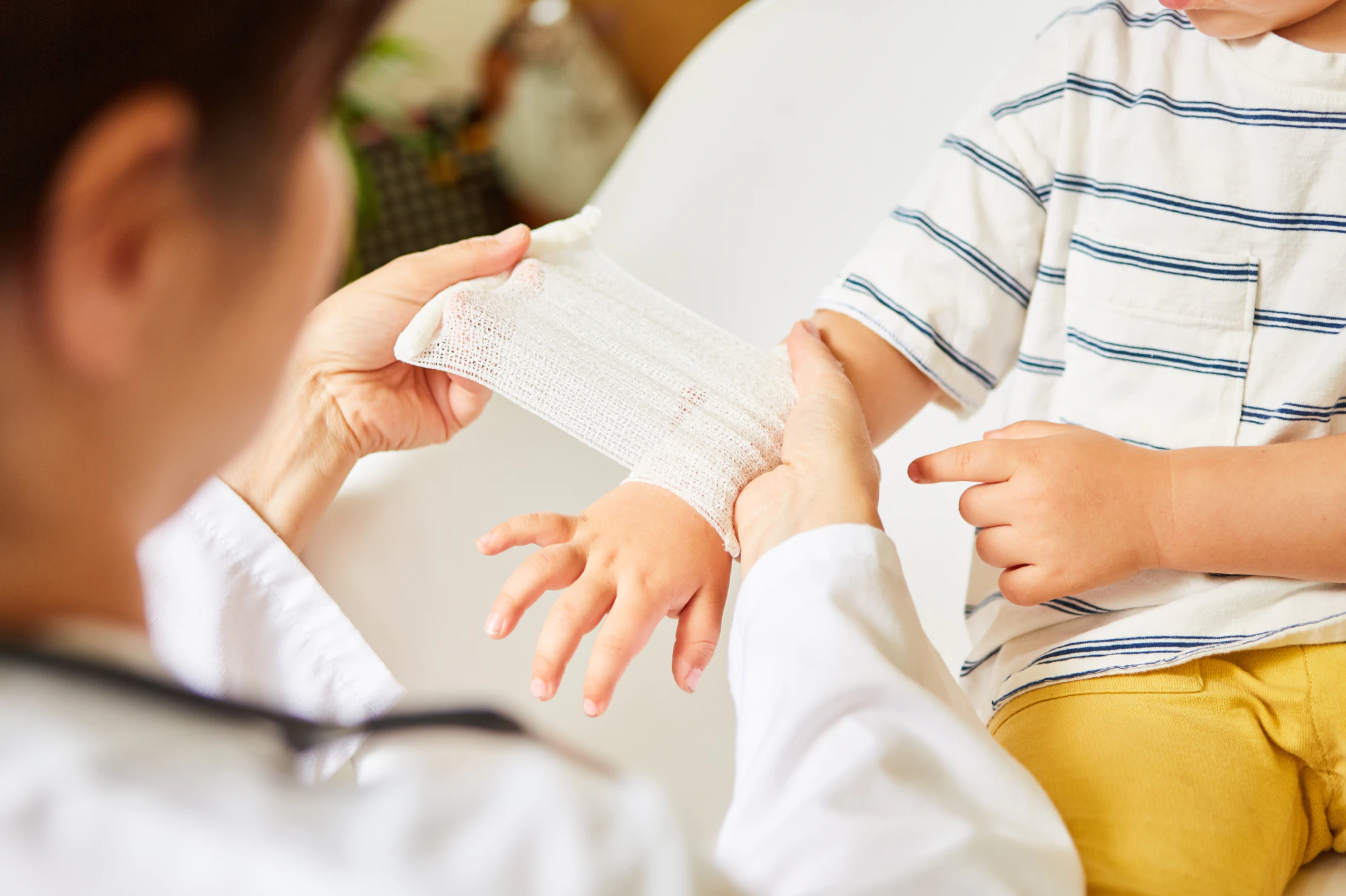What to Do if Your Child’s Cut Won’t Stop Bleeding
Children's Health
•
Aug 19, 2022

You can’t always treat a child’s cut that won’t stop bleeding yourself, but you can be prepared for the situation, even in the face of deep cuts that require more professional attention. For example, if your toddler bit through their lip, it may not be smart to treat that wound at home, but you can know where the closest emergency room is and how to keep your child calm on the ride.
If your child’s cut won’t stop bleeding after 10-15 minutes of direct pressure, head to the nearest emergency facility. Complete Care has 24/7, freestanding emergency rooms all throughout Texas and in Colorado Springs with expert staff that is prepared to give emergency care for your child’s deep or severe wounds.
How do you stop a bleeding cut that won’t stop?
Excessive bleeding from a small cut can be especially scary when a child is involved, but it is extremely important that you stay calm and attempt to identify how severe the injury is before treating it. After looking at the wound, you may be able to answer, “Does your child’s cut need stitches?” and can begin to form a plan. In particularly severe situations you shouldn’t attempt to administer first aid whatsoever, as your child might need stitches or pain mitigation.
You should go straight to your nearest emergency facility if the cut is:
- Deep or wide
- Filled with dirt, glass, or other debris
- On the child’s face or neck
- The result of an animal bite
- Continuously bleeding after 15 minutes of pressure to the wound is administered
Continue reading: How to take care of stitches
Apply pressure and elevate the wound
Using a clean piece of cloth gauze apply direct, firm pressure to the wound. How long do you hold a cut to stop bleeding? Fifteen uninterrupted minutes should be enough time to allow the blood to clot.
Elevate the wound, if it is located on an arm or a leg, to slow blood flow to the extremity. If blood soaks through the bandage, add another layer and continue to apply pressure to the wound. If the bleeding doesn’t stop or slow after 15 minutes you should seek medical attention immediately.
Wash the wound
Wash your hands before gently washing the wound with soap and water. Only wash the wound if it is small and has stopped bleeding. Do not try to clean a large or deep wound or a wound that is still profusely bleeding, for which you should continue to apply direct firm pressure until a medical professional can evaluate the wound Severe wounds have different medical needs that do not resemble at all how to treat a scrape or a small cut and should be treated by a medical professional.
Bandage the wound
If the cut has stopped bleeding, you can bandage it up after washing the wound with soap and water. Whether the wound you are treating needs a small band-aid or taped-in-place gauze pad, the two most important factors are that the wound is clean and that the area with the wound has sufficient circulation.
Follow-up wound care
Even if the wound has stopped bleeding, you still may need to seek emergency treatment if the child:
- Is dizzy
- Is weak
- Has clammy or pale skin
- Has an abnormally high heart rate
- Is short of breath
These are some of the symptoms that your child is going into shock, which is more likely with chest and abdominal wounds. These symptoms can also manifest in a child that is panicking, another reason why it is extremely important to remain calm and make sure you know what you are doing in emergency situations.
Know how to tell if a cut is infected, and keep an eye out for the signs of infection over the days following the injury.
Watch out for signs of infection
Even in the case of excessive bleeding from a small cut, it is possible for infection to occur. They start out small, they might not even hurt, but if they aren’t cleaned properly small cuts and scrapes can become infected. Common signs of infection include:
- Pus draining from the wound
- Redness around the wound
- Pain around the wound
- Sensitive skin around the wound
- Swelling around the wound
- Large and soft scabs
- Fever
- Slow healing
If you notice any signs of infection in your child’s wound, contact your doctor immediately or head to an emergency care center.
Child’s cut won’t stop bleeding? Complete Care can handle it!
Knowing what to do if your child’s cut won’t stop bleeding is more than just knowing some first aid — it also means having an emergency plan for when at-home first aid isn’t enough.
When you need to be seen by a doctor sooner rather than later, Complete Care’s 24-hour freestanding emergency rooms are fully equipped with low wait times. We have locations all over Texas and in Colorado Springs that are staffed with medical professionals ready to get your child the treatment they need.
More Helpful Articles by Complete Care:
